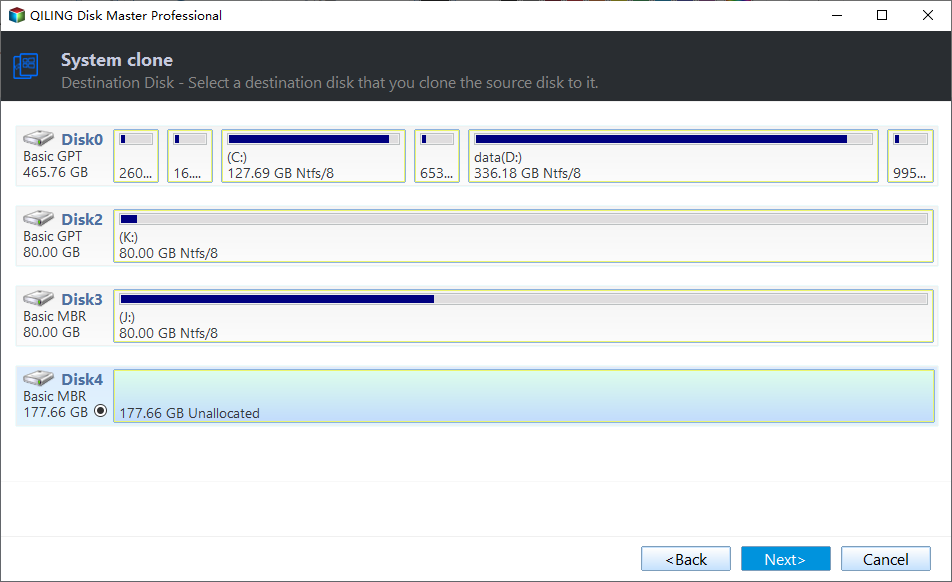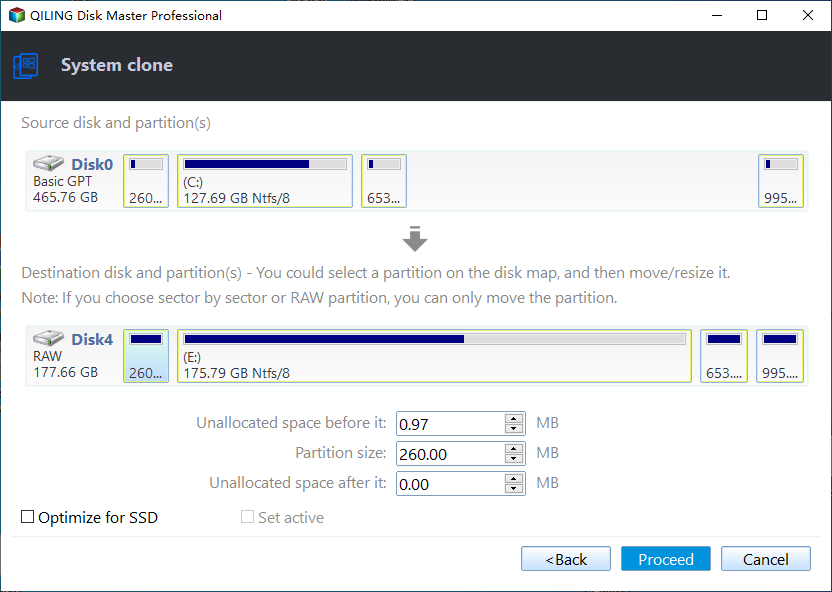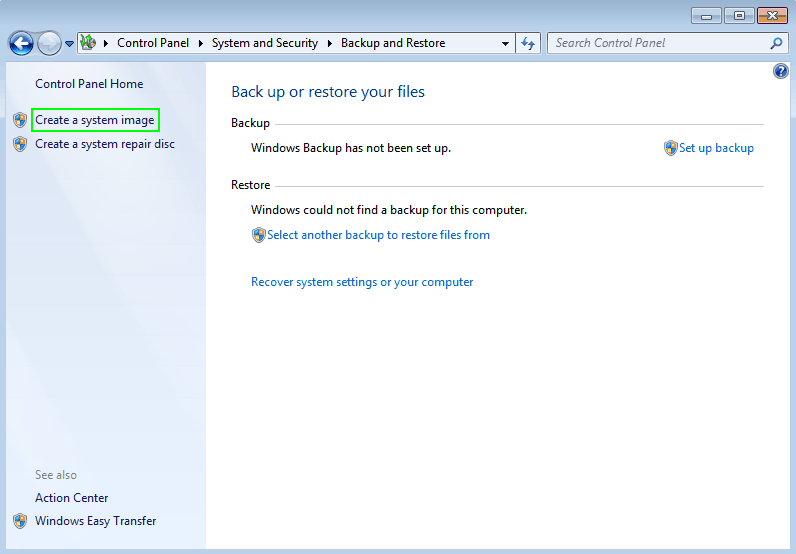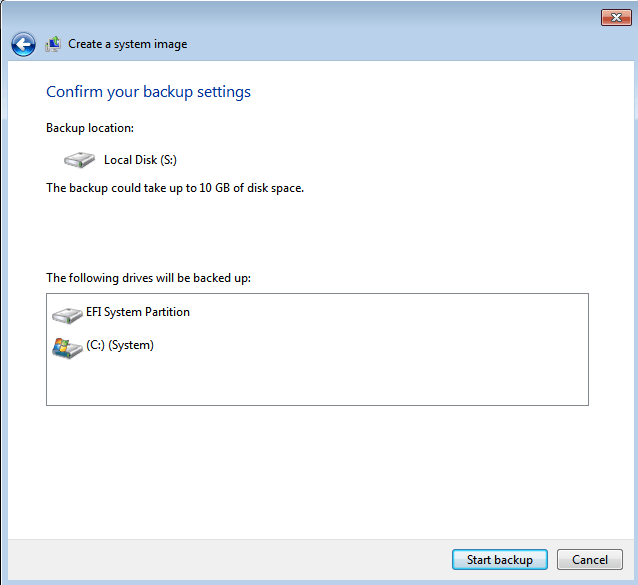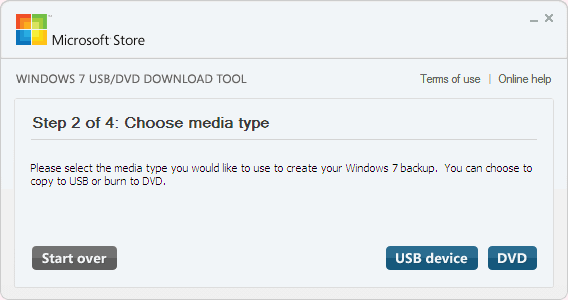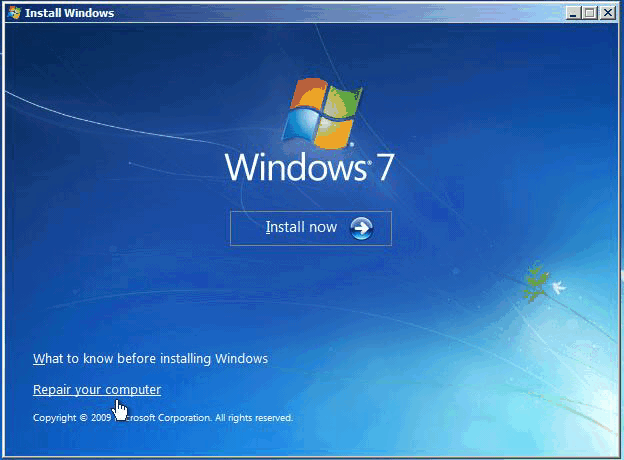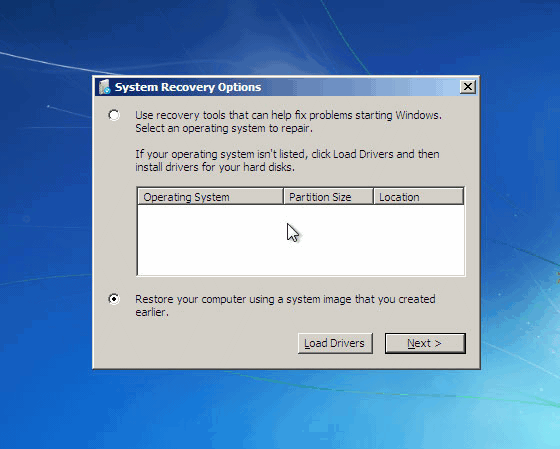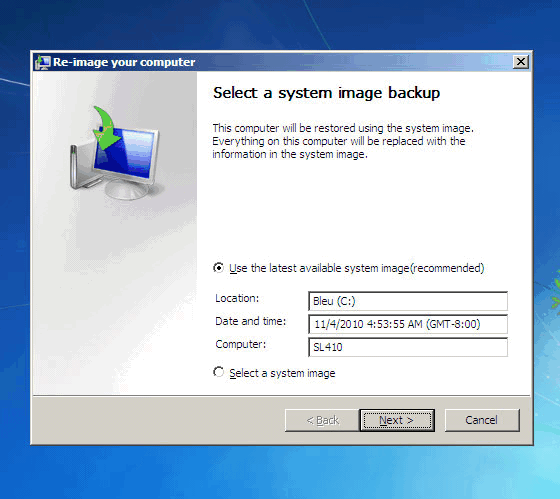Migrate Windows 7 from HDD to SSD Without Reinstalling
- Why migrate Windows 7 to SSD?
- Method 1: Migrate Windows 7 from HDD to SSD effortlessly with Qiling Disk Master
- Method 2: Migrate OS to SSD in Windows 7 with Backup and Restore
- Part 1: Create system image backup with Backup and Restore
- Part 2: Create bootable media with Windows 7 USB/DVD Download Tool
- Part 3: Restore system image to SSD
- Conclusion
Why migrate Windows 7 to SSD?
After a span of time, your computer may become slower and slower. Sometimes, you may even take several minutes to boot up your computer and wait for a quite long time to open programs and files. It’s annoying and time-consuming. At this time, you may want to migrate Windows 7 from HDD to SSD for better performance.
As known, SSDs have great performance than HDDs, and it's affordable nowadays. Here are some obvious advantages of it in the following.
- SSD are almost 10 times quicker than ordinary HDDs
- SSD has less dissipation and zero noise.
- SSD is not easy to wear out.
- SSD is smaller in volume and lighter in weight, which is convenient for users to take away.
- SSD does not contain any moving part.
Now, you may also want to migrate Windows 7 from HDD/SSD to SSD to improve the overall performance of your computer. Here are two common methods, namely, use the built-in free tool "Backup and Restore" or professional disk cloning software to migrate OS to SSD or clone HDD to SSD in Windows 7.
By comparison, the previous method is a little complicated but free, you need to backup system in Windows 7 and then restore system image to new SSD. If your computer fails, you still need to create a bootable USB or CD/DVD to boot it. And the restore process may fail if the new SSD is smaller. Thus, it's suggested to clone system in Windows 7 directly.
I'll introduce both ways in detail. The simpler method takes precedence.
- Method 1: Migrate Windows 7 from HDD to SSD effortlessly with Qiling Disk Master
- Method 2: Migrate OS to SSD in Windows 7 with Backup and Restore
Method 1: Migrate Windows 7 from HDD to SSD effortlessly with Qiling Disk Master
Qiling Disk Master Professional is a professional disk clone software, which integrates “System Clone”, “Disk Clone“ and ”Partition Clone” together. The previous two cloning methods are capable of migrating OS to SSD, and either way, you can boost the writing and reading speed of SSD. Then, which one should you use?
- System Clone: It will clone OS and all the data on the system partition, whether it's on MBR or GPT disk. For example, You can use it to migrate OS from MBR HDD to GPT SSD without losing data.
- Disk Clone: It not only clones system partition, but also other non-system partition on the disk. If the SSD disk is larger, it is able to add unused space to all partition or you can manually adjust the partition size to make full use of disk space. Also, you can convert the destination disk from MBR to GPT or GPT to MBR if both of them are different.
Finally, thanks to the wizard-like interface and clear steps, every user can use it smoothly, even the novice. You can choose them, depending the items you want to include and the size of your SSD disk.
Then, download the professional SSD migration software - Qiling Disk Master Professional and install it on your computer. For server users, try Qiling Disk Master Server.
(PS: The Clone feature in the trial version can only be demonstrated. To migrate Windows 7 to SSD and boot from it, you need to upgrade pro trail. You can enjoy 10% off in the upgrade page.)
Step 1. Connect SSD to your computer and make sure it can be detected. In the main page of Qiling Disk Master, click “Clone" and then select “System Clone” subsequently.
Step 2. Select the connected SSD as the destination disk and click “Next”. The system partition and boot files are selected by default.
Note: The destination disk will be overwritten after cloning Windows 7 hard drive to SSD, please create a disk backup to prevent any unexpected failure or human error. If you only want to protect important data, family photos or working documents, for example, you can choose to backup files or folders.
Step 3. Confirm the source and destination partition, then check the “SSD Alignment” option to optimize your SSD and click “Proceed” to migrate OS to SSD in Windows 7.
Notes ✎...
• Don't check "Sector by sector clone" if the used space on target disk is smaller than source disk, otherwise the cloning process will fail.
• It's suggested to use SSD as OS and HDD for storage if your original hard drive works well, so you can enjoy the excellent performance of SSDs and large capacity of HDDs.
• If your disk space is sufficient, you can choose to clone hard drive to larger drive or clone SSD to HDD.
Wait for a while, and click "Finish" when this operation is completed. Then, boot computer from the cloned hard drive and check if all your content are intact.
If it does not boot, you can go to BIOS and change the SSD disk to the first boot option. And then save changes and reboot.
Method 2: Migrate OS to SSD in Windows 7 with Backup and Restore
Here you will use the built-in free backup and restore software to move Windows 7 to SSD, and the entire process is divided into 3 parts. Please follow the steps carefully.
Part 1: Create system image backup with Backup and Restore
Step 1. Insert an empty disk into your computer to store the backup image and make sure it can be detected.
Step 2. Go to Start > Control Panel > System and Security > Backup and Restore, then click “Create a system image”.
Step 3. Choose the hard drive you insert as destination path. Click Next to proceed.
Step 4. You’ll be asked: “which drives do you want to include in the backup?” The system drive and system reserved drive are included by default. You can add more drives to the image file or you can just ignore this part. Click Next to continue.
Step 5. check the backup location and the size of the backup image, then click Proceed. When finished, the system image backup is saved on the SSD and you can verify it from this drive.
Part 2: Create bootable media with Windows 7 USB/DVD Download Tool
Now, we should start to create a repair disk or bootable media in Windows 7. Both of them can help you boot your computer. But they are different. The repair disk can only be created on CD/DVD while the bootable media with Windows 7 USB/DVD Download Tool can be burned to USB flash drive.
If you don’t have a CD/DVD, you can follow the steps below and learn how to upgrade to SSD in Windows 7.
Step 1. Download Windows 7 USB/DVD Download Tool and ISO files from Microsoft.
Step 2. Open this tool and click Browse to locate Windows 7 ISO files from your computer.
Step 3. Select USB device as the media type.
Step 4. Connect USB drive at least 4GB and select it from the drop-down menu, then click Begin copying. Wait until the process is 100% completed.
Part 3: Restore system image to SSD
This is the final part. Just connect the hard drive which contain the system image, new SSD and bootable USB drive to your computer, then set boot priority for the USB drive and press F10 to restart your computer. Then, follow the steps below to transfer Windows 7 to SSD.
Step 1. Press any key to boot from the USB drive when prompted. Then, click Next until you see Repair your computer at the lower left.
Step 2. Click Repair your computer.
Step 3. Click "Restore your computer using a system image that you created earlier”, then click Next.
Step 4. Tick Use the latest available system image(recommended) and click Next to complete the restore process. Reboot the system and see if your boot drive is SSD.
Now, how to replace hard drive with SSD in Windows 7 has already been done successfully. But if your target disk is smaller, the restoration will fail. Even some users report that there is no available backup image in the re-image your computer window.
If you are in such case, you'd better use disk cloning software to clone HDD to SSD directly. By default, Qiling Disk Master clone only used sectors, thus you can easily clone large HDD to smaller SSD as well as clone larger drive to smaller drive.
Conclusion
Here comes to the end of this post. You are suppose to know how to migrate Windows 7 to SSD as well as migrate Windows 11/10/8 to SSD easily and quickly. You can choose to backup and restore with built-in Windows backup utility, but the process is complicated. In addition, the restoration may fail due to different reasons, such as, Windows cannot find a system image backup on this computer, not enough space, system restore fails because of EFI/BIOS etc.
Therefore, you'd better use a trusta and reliable software like Qiling Disk Master Professional. with it, you can choose to clone system or entire disk and then directly boot from the cloned hard drive without restoring image first. Also, it's still a backup and restore software, so you can use it to create a system image backup, incremental/differential backup, USB plugged in backup, deploy image to multiple computers (supported by Qiling Disk Master Technician) simultaneously, etc.
Related Articles
- Easily Transfer Windows 7 to New Hard Drive (with Free Methods)
Want to transfer Windows 7 to a new hard drive? This page introduces 3 simple ways to migrate Windows 7 to new HDD or SSD without reinstalling OS. Find the best solution for you. - How to Clone SSD in Windows 7 Easily for Free
Do you want to clone SSD in Windows 7 to a larger SSD? This goal can be achieved through very simple operations. All you need is an efficient cloning software. - Move Hard Drive to New Computer in Windows 7/8/10 without Reinstalling
This article is written for hardware failure when moving hard drive to new computer in Windows 7, 8, 10, 11? If you happen to need this, scroll down to learn more. - Replace Laptop HDD with SSD without Reinstalling (with Video)
You will learn the best practice to replace laptop HDD with SSD without reinstalling Windows 10 or 11, and one-stop wizard for hard drive replacement including video tutorials.

